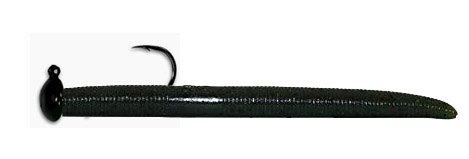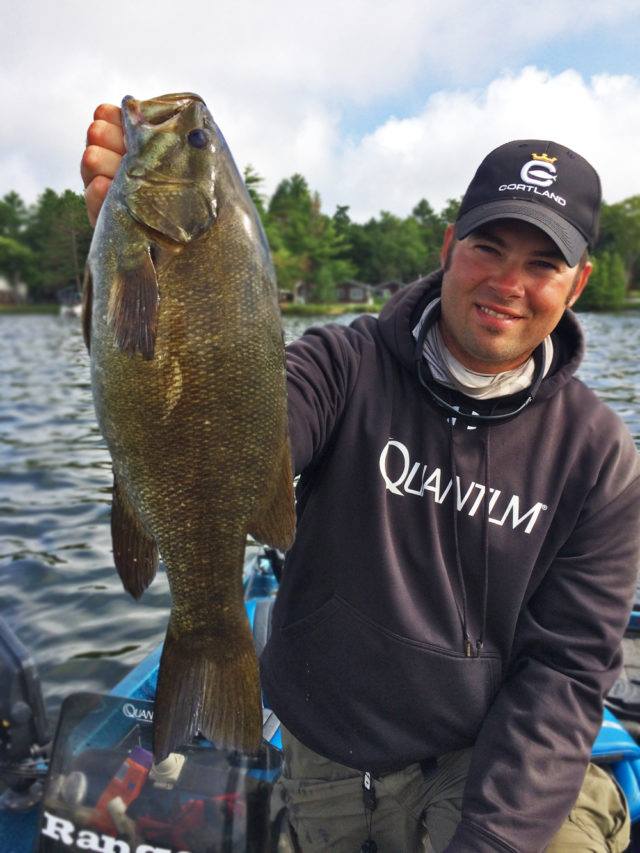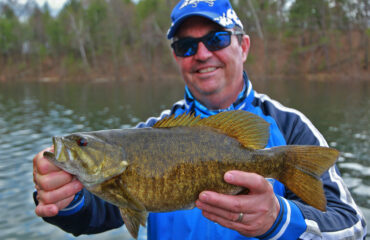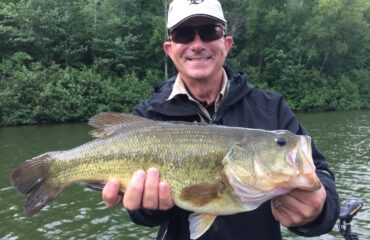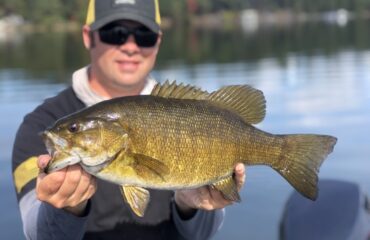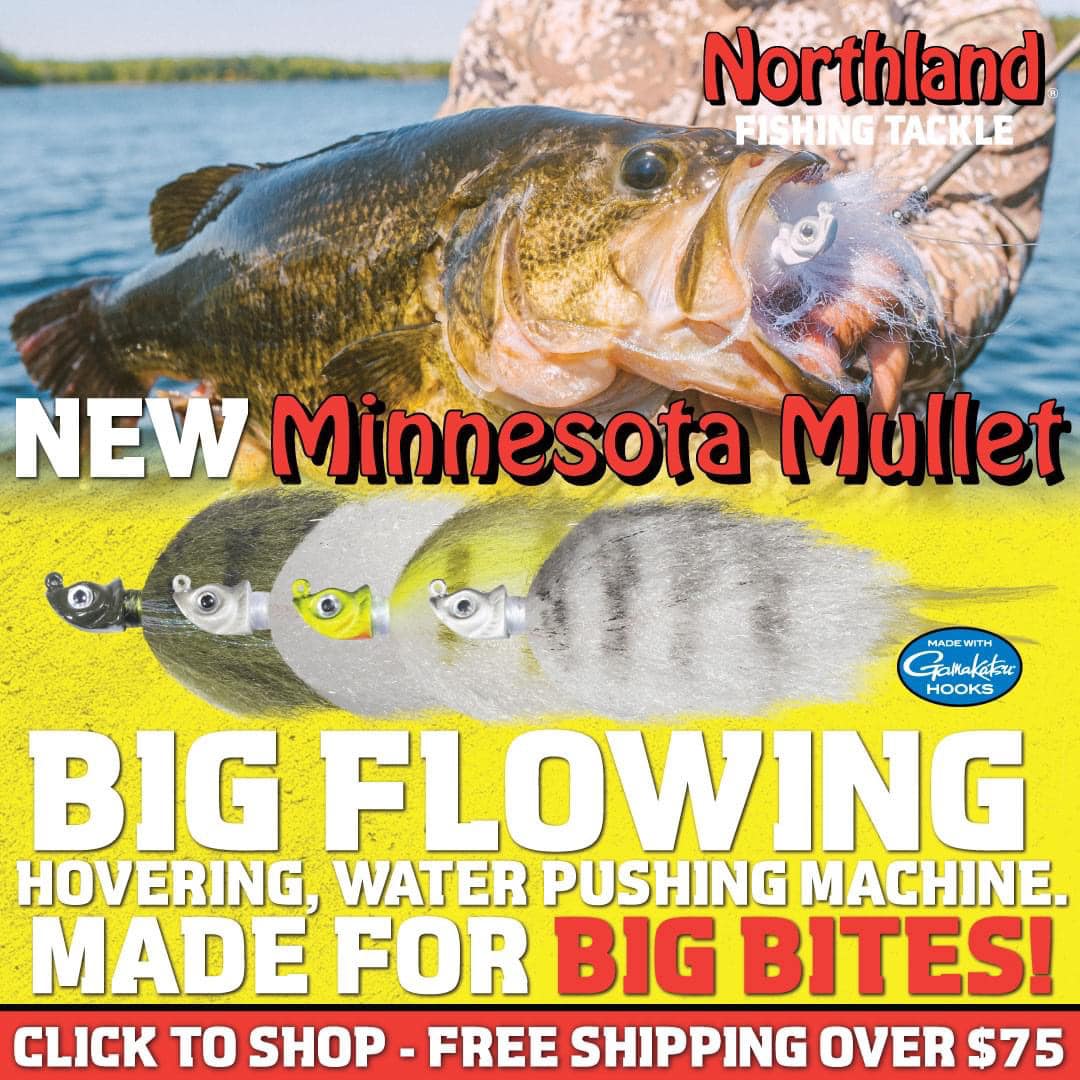Ned Rigs for Northwoods Bass
This fish catcher is simple, deadly, and efficient. The Ned rig has actually been around for the last half century or so, when Ned Kehde first concocted this jig worm. But it really came onto the bass fishing scene a few years ago when the tactic became publicized and exploited by the man himself.
Since then, the entire bass fishing world has gone mad and fallen in love with it. It excels in difficult fishing conditions, on pressured waters, and is one of the best clear-water finesse fishing options to consider. Best of all, it’s frugal fishing in its simplest form.
Grab a few mushroom style jig heads, and a handful of stick baits. You are now set for days of endless smallmouth fishing that just cost an expense of $10 or less in baits and heads, and will out-fish nearly everything else.
In prior seasons, I have discredited the Ned rig, bashed it, and called it the dumbest little lure for how effortless and automatic it seemed. It’s featureless and most anglers who have grasped the concept of bottom fishing and jigging can succeed with it. But what I learned about it that makes it wildly successful are its physical properties, underwater manipulations, and characteristics.
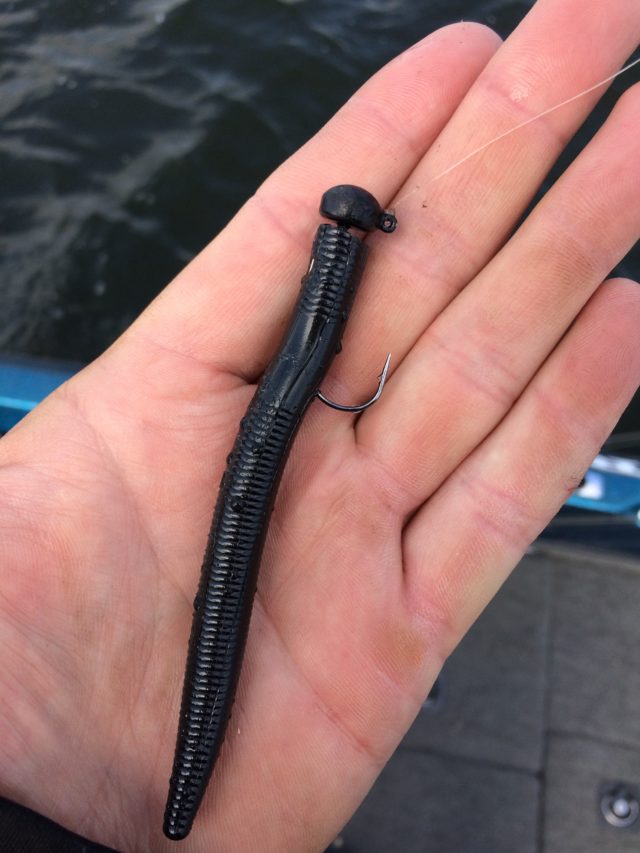 While guiding my customers in summer 2018, we had eye-opening experiences with the rig. I’ve kept it tied onto a couple of rods ever since. It’s a numbers presentation, but it’s one that targets some of the largest bass living in the most pressured lake systems. It’s also the bait to use when smallmouth don’t show interest in tubes, plastics, or other jigging methods.
While guiding my customers in summer 2018, we had eye-opening experiences with the rig. I’ve kept it tied onto a couple of rods ever since. It’s a numbers presentation, but it’s one that targets some of the largest bass living in the most pressured lake systems. It’s also the bait to use when smallmouth don’t show interest in tubes, plastics, or other jigging methods.
Traditionally a small profile, the Ned Rig is typically fished with a 1/16 to 1/8 oz. mushroom style jig head, and tipped with a 2 to 3 inch tail segment of a stick worm. The flat mushroom style jig head allows a stick bait to stand and be presented upright. This is an angle bass are new to, and one that also maximizes grabs and hook-ups.
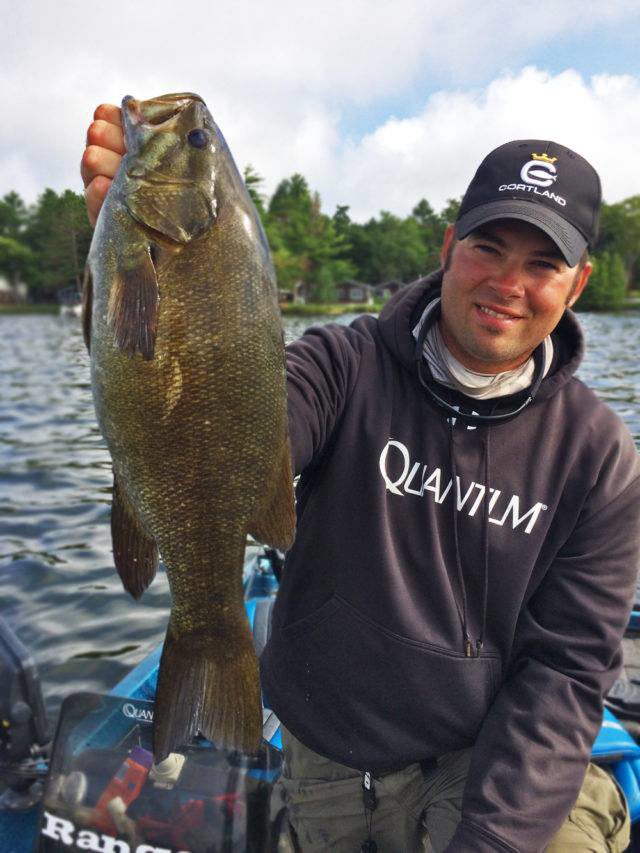 Even though many anglers fishing the rig are scoring gargantuan numbers of bass of all sizes, and experiencing 50 to 100 fish days with it as an all-day finesse option, the Ned Rig is my solution for big summer season smallmouth when they’re fixated on leech patterns – typically from mid June through August.
Even though many anglers fishing the rig are scoring gargantuan numbers of bass of all sizes, and experiencing 50 to 100 fish days with it as an all-day finesse option, the Ned Rig is my solution for big summer season smallmouth when they’re fixated on leech patterns – typically from mid June through August.
Rather than fish the most common lightweight Ned Rig sizes and styles that are designed for slow sink rate and longer life in the strike zone, I have taken the approach to a different level, modifying it for my big bass of Wisconsin’s northern inland lakes and using it as a structure tool.
I fish it with a 5/16 oz. Super K Jigs mushroom head. This weight helps the worm maintain bottom contact majority of the time, where most desirable smallmouth are meandering through structure. Then, rather than use a small piece of worm on the business end, I will rig an entire 5 inch full bodied stick. By maintaining bottom contact and using a heavier head that positions the worm standing upright, more fish get caught. This approach weeds out nearly all of the little fish, and focuses on more of the desirable 18″ and up fish that can easily take down a full bodied 5 inch worm.
Lighter rig weights are proven to be best for all scenarios, but heavier seems to work better in Wisconsin where my smallmouth come supersized. While I could probably surpass over 100 bass days with the standard 2 or 3 inch Ned rig, my supersize model targets the biggest bass of each lake system. To stay efficient with time management and catching, I only turn to the Ned Rig at high-percentage locations after I have found the fish with more productive search lures. Once these areas are identified and we have a few smallmouth bites already under our belt, it’s easy to load up on action and big fish with the rig.
There are a number of retrieve methods. From hopping, dragging and shaking, to motionless dead sticking, and strolling and swimming if the boat is moving to cover water. I do it all, but be best to cater to the activity level and response of fish.
With a 7 ft. medium action rod and size 30 Quantum PT spinning reel spooled with lightweight 10 or 15 lb. Cortland Masterbraid and a 3 foot section of 8 lb. fluorocarbon leader, I bomb cast the Ned Rig for long distances. Then run through all of the retrieve styles, attempting to imitate a leech.
The high percentage smallmouth areas it fishes best are spot-on-spot locations. In this case, ledges, rock, boulder, wood, cribs, weedlines, and any shallow & mid depth zones that are unique to a specific area. For deeper rock in 10 to 20 ft. depths, increase jig head size & weight to 1/4 oz. if possible in order to get the package down to fish quickly. Throughout the retrieve, always keep a taught line, and some pressure on rod with tip elevated high, in order to detect the most subtle bites and taps. When fish tap the worm, they’ll effortlessly slurp the entire jig worm at once. An immediate hook set will result in the bass connecting to hook in the roof of the jaw, 99% of the time.
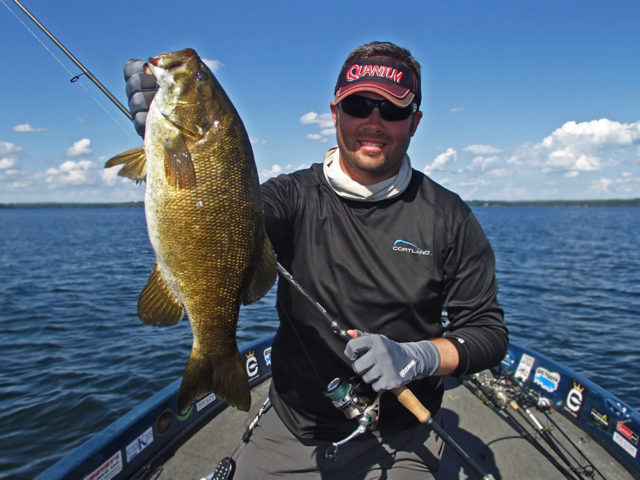
Most anglers will fish a variety of colors. However, I fish black worm colors only. It out-produces them all. Any worm manufacturer is fine. As long as it’s solid black or a dark smoke color to represent a leech. I have friends custom pour us stiffer worms so we can catch up to 10 fish per 1 bait before having to re-rig or chop down a damaged segment of the worm.
Northern Wisconsin smallmouth bass are in trouble for seasons to come – at least until they become conditioned. Then it’ll be time to reinvent the wheel again with the next greatest lure concoction that’s gone overlooked for the last half-century.
